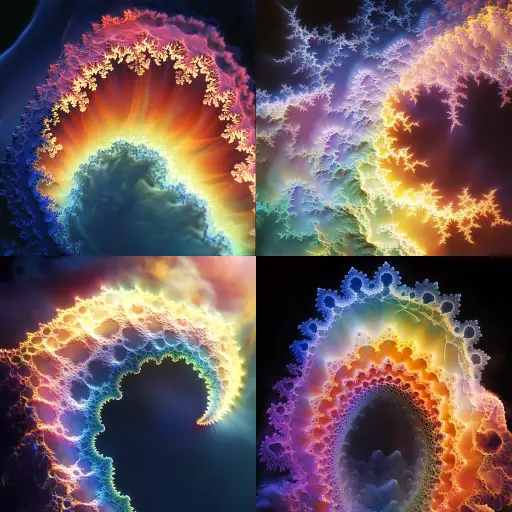Explore the Best AI Image Gallery

AI-Powered Product Photography: Redefining Visual Commerce
The world of product photography is undergoing a dramatic transformation, fueled by the rapid advancements in artificial intelligence (AI). From automating tedious tasks to generating stunning visuals, AI is revolutionizing how products are presented and perceived online. This blog post delves into the multifaceted impact of AI on product photography, exploring its diverse applications, ethical considerations, and future trends that will shape the landscape of visual commerce.
Revolutionizing Product Presentation
AI-powered tools are empowering businesses to create captivating product images with unparalleled ease and efficiency. Here are some key applications:
- Automated Image Generation: AI algorithms can generate realistic product images from 3D models or basic descriptions, eliminating the need for physical photography setups and reducing costs.
- Background Removal & Editing: AI-powered software can automatically remove backgrounds from product images, enabling seamless integration into various marketing materials. Complex editing tasks such as color correction, lighting adjustments, and object removal can also be automated.
- Product Visualization & Customization: Consumers can now use AI-driven tools to visualize products in different colors, styles, or settings. This interactive experience enhances engagement and allows customers to personalize their choices.
Elevating Quality and Consistency
AI significantly improves the quality and consistency of product images across various platforms:
- Enhanced Image Resolution & Detail: AI algorithms can enhance image resolution, sharpen details, and reduce noise, resulting in high-quality visuals that capture every nuance of the product.
- Consistent Styling & Branding: AI-powered tools ensure consistency in product photography by automatically applying predefined styling guidelines, color palettes, and brand elements across all images.
- Optimized Images for Different Platforms: AI can automatically resize and optimize images for various online platforms, ensuring optimal display quality and loading speed.
Ethical Considerations
While AI offers tremendous benefits, its crucial to address the ethical implications of its use in product photography:
- Transparency & Disclosure: Businesses should clearly disclose when AI-generated images are used, ensuring transparency with consumers.
- Bias & Representation: AI algorithms can perpetuate existing biases if trained on biased datasets. Its essential to ensure diverse and representative data sets to avoid reinforcing stereotypes in product imagery.
- Job Displacement: The automation capabilities of AI may lead to job displacement in the photography industry. Its important to consider the impact on human workers and explore reskilling opportunities.
Future Trends
The future of AI-powered product photography is brimming with exciting possibilities:
- Personalized Product Visualization: AI will enable even more immersive and personalized product experiences, allowing customers to virtually try on clothes, customize furniture, or see how products fit into their homes.
- AR/VR Integration: The integration of AI with augmented and virtual reality technologies will create interactive product displays that blur the lines between the physical and digital worlds.
- Real-Time Product Recommendations: AI algorithms can analyze customer preferences and behavior to provide personalized product recommendations based on real-time visual cues.
AI is poised to revolutionize product photography, creating a more efficient, engaging, and immersive visual commerce experience. By embracing its potential while addressing ethical considerations, businesses can harness the power of AI to elevate their brand and connect with customers in unprecedented ways.
](https://images.ai-img.art/thumbnails/150/7599c9e7507c77a975081d554947c9dea123e678a7ece42d30f571f639620598.webp)





](https://images.ai-img.art/thumbnails/150/efd8a9ad06ef2c72e3378698ad5e592d3d2bf8eff85c25e75db7c9902c7be353.webp)

](https://images.ai-img.art/thumbnails/150/031692dcf8fbf869092e8cea50f9411a45dadc1f189ea67b8dece8e02952a7e3.webp)



